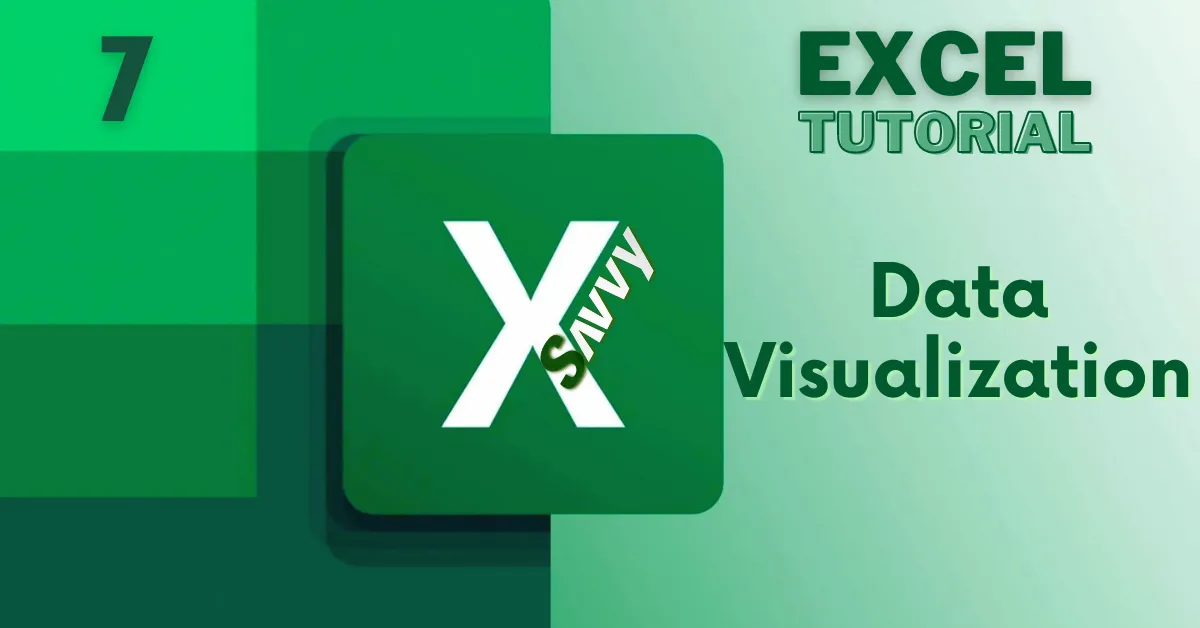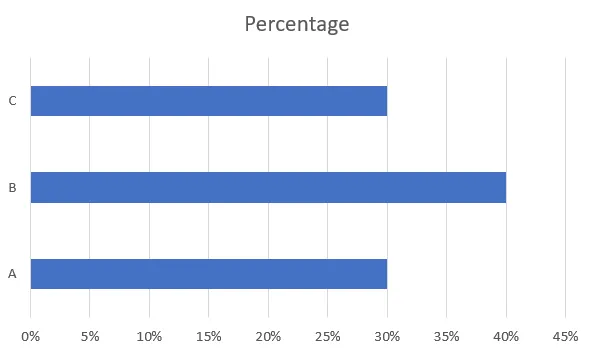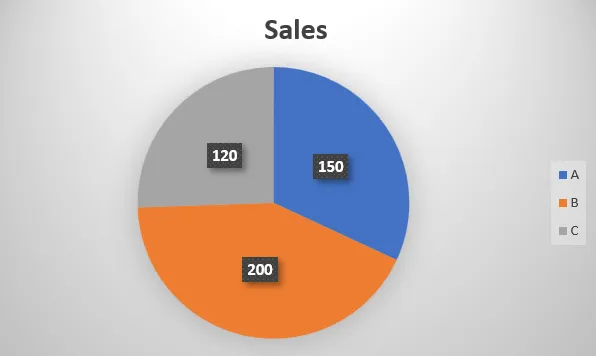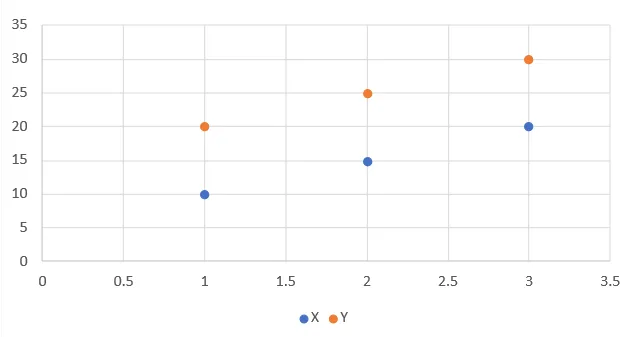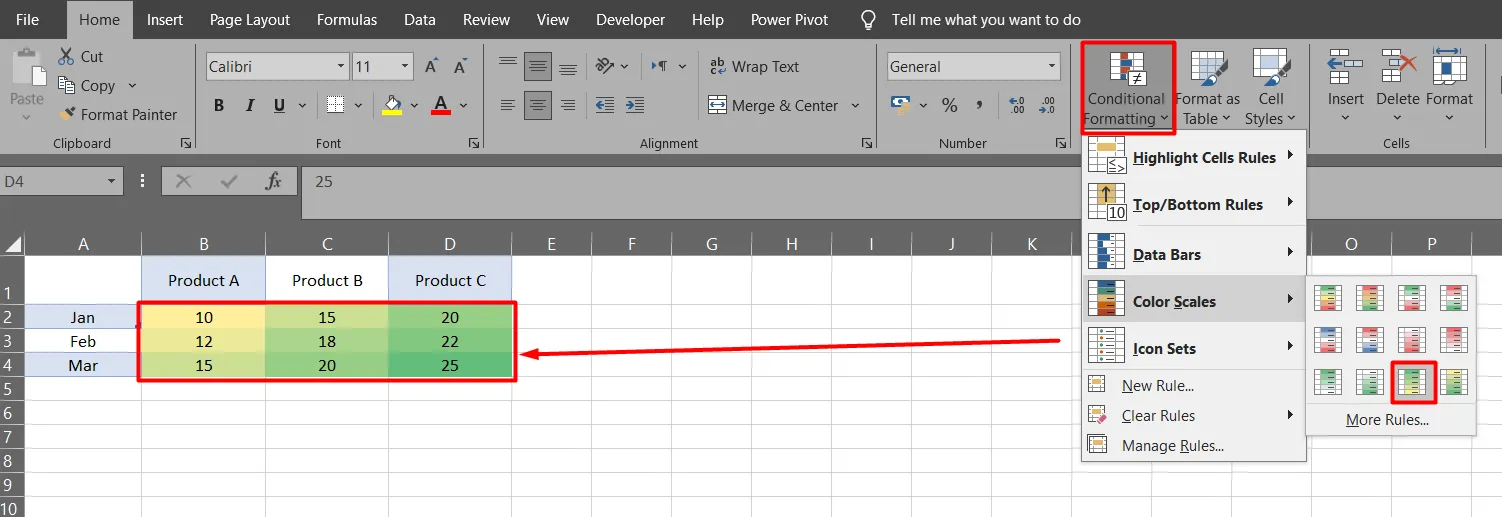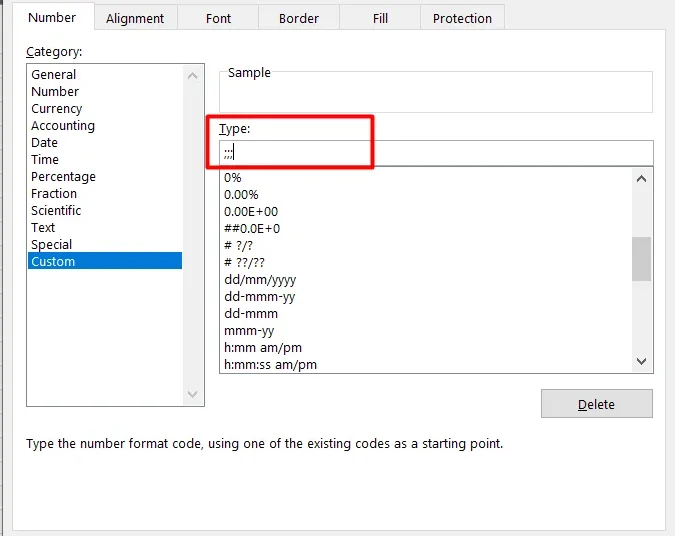Welcome to Excel Savvy #7 Your Free Excel Tutorial. Excel Savvy tailors its content to your needs, ensuring that every topic and function resonates with your day-to-day challenges. we encourage you to share your preferences. Have a specific function or section in mind that you’d love to explore in more detail? Your input fuels our content. Drop us a comment, or Contact Us and we’ll tailor our future explorations to address your curiosity!
Excel Data Visualization Introduction
Data Visualization in Excel is a powerful tool that transforms raw data into meaningful insights, aiding decision-making processes. Simply put, it involves representing data visually through charts and graphs to make complex information more understandable. Excel offers robust features for creating compelling visualizations. In this chapter of Excel Savvy, we’ll delve into the basics, advanced techniques, and best practices of Excel Data Visualization.
Importance of Data Visualization
In today’s data-driven world, the ability to effectively communicate insights is crucial. Data Visualization simplifies complex information, making it accessible to a wider audience. Excel provides an ideal platform for professionals across various domains to harness the power of visual representation.
Overview of Excel’s Role
Excel serves as a dynamic canvas for crafting visual stories from data. By leveraging its built-in chart tools and advanced features, users can create visually appealing and interactive representations. Whether you’re a beginner or an experienced user, understanding the basics of data visualization in Excel is a valuable skill.
Effective Data Representation
Clear and concise data representation is key to conveying information accurately. Effective visualizations enable stakeholders to grasp trends, patterns, and outliers at a glance. As we explore the intricacies of Excel Data Visualization, remember that the goal is not just to create charts but to tell a compelling story with your data.
Basics of Excel Data Visualization
Understanding Data Types
Before diving into Excel’s charting capabilities, it’s crucial to understand the types of data you’re working with
1. Numeric Data
Numeric data includes quantitative values, such as sales figures, temperatures, or quantities. Bar charts, line charts, and scatter plots work well for visualizing numeric data.
2. Categorical Data
Categorical data represents qualitative information, like product categories or customer segments. Pie charts and bar charts are effective in illustrating categorical data.
Choosing the Right Visualization Type
Selecting the appropriate chart type enhances the clarity of your message. Here’s a quick summary:
1. Excel Bar Charts
- Ideal for comparing values across different categories.
Example:
| Product | Sales |
|---|---|
| A | 150 |
| B | 200 |
| C | 120 |
Bar Chart:
2. Excel Pie Charts
- Useful for showing the proportion of parts to a whole.
Example:
| Category | Percentage |
|---|---|
| A | 30% |
| B | 40% |
| C | 30% |
Pie Chart:
3. Excel Line Charts
- Effective for displaying trends over time.
Example:
| Year | Sales |
|---|---|
| 2022 | 100 |
| 2023 | 150 |
| 2024 | 200 |
4. Scatter Plots
- Useful for visualizing relationships between two variables.
Example:
| X | Y |
|---|---|
| 10 | 20 |
| 15 | 25 |
| 20 | 30 |
Scatter Plot:
5. Excel Heatmaps
- Ideal for displaying variations in a matrix dataset.
Example:
| Product A | Product B | Product C | |
|---|---|---|---|
| Jan | 10 | 15 | 20 |
| Feb | 12 | 18 | 22 |
| Mar | 15 | 20 | 25 |
Heatmap:
To conceal table values in Excel, follow these steps:
- Select the range of cells containing the values you want to hide.
- Navigate to the “Number Format” option. You can access this by either right-clicking on the selected range and choosing “Format Cells” or by using the shortcut
Ctrl + 1 - In the “Format Cells” dialog box, go to the “Number” tab.
- Select “Custom” from the list on the left.
- In the “Type” field, type three colons (:::) or any desired character that suits your preference.
- Click “OK” to apply the custom number format.
This will visually hide the values in the selected cells, making them appear as the chosen character (:::) while retaining the actual data in the background.
Getting Started with Excel Data Visualization
A. Excel’s Data Import and Formatting
1. Importing Data
Excel simplifies the process of importing data from various sources, including CSV files, databases, and online platforms. To import data:
- Navigate to the “Data” tab.
- Choose the appropriate data import option.
- Follow the prompts to select and load your data.
2. Cleaning and Preparing Data
Clean and organize your data for effective visualization:
- Identify and handle missing values.
- Remove duplicate entries.
- Format data consistently.
B. Overview of Excel Chart Tools
1. Inserting Charts
Creating charts in Excel is straightforward:
- Highlight the data you want to visualize.
- Go to the “Insert” tab.
- Select the desired chart type.
2. Selecting Data for Visualization
Excel allows flexibility in choosing data ranges:
- Easily adjust data ranges by dragging selection handles.
- Include or exclude specific data points for customization.
3. Customizing Chart Elements
Enhance the visual appeal of your charts:
- Modify colors, fonts, and styles.
- Add titles, labels, and legends for clarity.
- Adjust chart elements through the right-click menu.
4. Applying Styles and Themes
Excel provides pre-designed styles and themes:
- Experiment with different styles to find the most suitable.
- Maintain consistency across multiple charts with themes.
By mastering these fundamental aspects, you pave the way for more advanced data visualizations in Excel.
Advanced Excel Chart Features
A. Dynamic Charts
1. Creating Dynamic Ranges
Dynamic ranges allow your charts to update automatically as data changes. To create dynamic ranges:
- Utilize Excel tables to expand or contract based on data changes automatically.
- Incorporate named ranges for flexibility in data selection.
2. Using Data Validation for Dynamic Charts
Data validation ensures data accuracy and consistency:
- Set up dropdown lists to choose data dynamically.
- Implement conditional formatting for better data visualization.
B. Sparklines
1. Introduction to Sparklines
Sparklines are miniature charts embedded in individual cells:
- Ideal for displaying trends within a small space.
- Three types: Line, Column, and Win/Loss.
2. Implementing Sparklines in Excel
To add sparklines:
- Select the cell range where you want sparklines.
- Go to the “Insert” tab and choose the sparkline type.
Advanced features like dynamic charts and sparklines elevate your Excel data visualizations, providing real-time insights and enhancing interactivity.
C. Waterfall Charts
1. Understanding Waterfall Charts
Waterfall charts illustrate incremental changes in data:
- Ideal for showcasing financial statements and project analysis.
- Highlights positive and negative values, emphasizing cumulative effects.
2. Creating Waterfall Charts in Excel
Follow these steps to create a waterfall chart:
- Organize data with categories like “Start,” “Increase,” “Decrease,” and “End.”
- Select data and insert a stacked bar chart.
- Format the chart to display as a waterfall chart, emphasizing the flow of values.
D. Radar Charts for Multivariate Analysis
1. Introduction to Radar Charts
Radar charts visualize multivariate data points on axes radiating from a central point:
- Useful for comparing performance across multiple categories.
- Each axis represents a different variable.
2. Building Radar Charts in Excel
To construct a radar chart:
- Arrange data in a table with categories and corresponding values.
- Insert a radar chart through the “Insert” tab.
- Customize the chart by adding labels and adjusting scales for accurate interpretation.
These Excel chart features provide diverse options for representing complex data relationships and conducting in-depth analyses.
Excel Charts Tips & Best Practices
A. Labeling and Annotations
1. Adding Data Labels
Data labels provide clarity to your charts:
- Include labels directly on data points for numeric data.
- Utilize category names for categorical data.
2. Using Text Boxes for Annotations
Annotations add context to your visualizations:
- Insert text boxes to explain specific data points.
- Use arrows and shapes to highlight key information.
B. Color Schemes and Formatting
1. Choosing Appropriate Color Palettes
Selecting the right colors enhances readability:
- Use contrasting colors for different data series.
- Avoid overly vibrant colors that may cause distraction.
2. Formatting for Clarity and Aesthetics
Consider the overall appearance of your charts:
- Adjust gridlines and axes for better alignment.
- Experiment with fonts and chart backgrounds for aesthetic appeal.
Remember, the goal is not just to present data but to tell a coherent and visually appealing story.
C. Data Visualization Accessibility
1. Alt Text for Charts
Make your visualizations accessible to all users:
- Add alternative text to describe the chart for screen readers.
- Ensure meaningful alt text that conveys the chart’s purpose.
2. Use Consistent Units
Maintain consistency in units across your visualizations:
- Ensure all axes and labels use the same units for accurate interpretation.
- Communicate any variations in units.
D. Interactivity and Dynamic Elements
1. Utilize Interactive Features
Excel offers interactive elements for enhanced user engagement:
- Incorporate data filters and slicers for dynamic exploration.
- Link charts to drop-down menus for interactive dashboards.
2. Dynamic Titles and Annotations
Create dynamic titles and annotations that adapt to changing data:
- Use formulas to dynamically update chart titles based on selected data.
- Employ dynamic text boxes that adjust to highlight changing trends.
E. Storytelling with Data
1. Structure Your Data Story
Present your data in a logical and engaging sequence:
- Clearly define the narrative you want to convey.
- Build a story arc that guides the reader through the data.
2. Highlight Key Insights
Draw attention to crucial points in your data:
- Employ callout boxes to emphasize key findings.
- Use bold colors or annotations to highlight important trends.
Implementing these additional tips ensures that your Excel data visualizations inform, engage, and empower your audience.
Excel Add-ins for Data Visualization
A. Power Query
1. Extracting and Transforming Data
Power Query is a tool within Excel that revolutionizes the process of data extraction and transformation. Let’s see how you can leverage its capabilities:
- Connectivity: Power Query enables seamless connectivity to diverse data sources, including databases, online platforms, and CSV files. This allows you to extract data directly into Excel without the need for complex data manipulation.
- Data Transformation: The tool provides an intuitive interface for transforming and cleaning data. Functions like filtering, sorting, and removing duplicates empower users to refine datasets swiftly. With Power Query, you can ensure that your data is in optimal shape for visualization.
2. Loading Data into Excel
Once you’ve transformed your data using Power Query, loading it back into Excel is a seamless process:
- Query Editor Integration: Power Query’s integration with the Query Editor in Excel allows for a smooth transition from data transformation to loading. The Query Editor becomes a central hub for managing your data before it enters the Excel environment.
- Data Load Options: Power Query offers flexible options for loading data. You can load the refined data directly into Excel tables or PivotTables, providing a structured foundation for your visualizations.
B. Power Pivot
1. Creating Data Models
Power Pivot is an Excel add-in designed to handle larger datasets and facilitate advanced data modeling:
- Data Relationships: One of Power Pivot’s key features is its ability to establish relationships between different data tables. This is especially useful when working with complex datasets containing multiple interrelated variables.
- Aggregation and Summarization: Power Pivot allows for efficient aggregation and summarization of data. With the ability to create calculated columns and measures using Data Analysis Expressions (DAX), users can derive new insights from their datasets.
2. Integrating with Excel Charts
Combine the power of Power Pivot with Excel’s charting capabilities for a holistic data visualization experience:
- Linking PivotTables and PivotCharts: Connect PivotTables and PivotCharts directly to Power Pivot data models. This dynamic linkage ensures that any changes in the underlying data are instantly reflected in your visualizations.
- Utilizing DAX for Advanced Calculations: Leverage DAX formulas to perform advanced calculations that go beyond the capabilities of standard Excel functions. This opens up possibilities for complex analyses and customized metrics.
By incorporating Power Query and Power Pivot into your Excel data visualization workflow, you gain access to advanced tools that can handle larger datasets, provide more sophisticated analyses, and elevate the depth of your visualizations.
AI tools for Excel Data Visualization
AI-powered tools are transforming traditional Excel workflows, adding a layer of intelligence to data visualization. Let’s explore key AI Excel tools, uncovering their capabilities and how they contribute to a more efficient and insightful data analysis process.
1. Microsoft Excel Ideas: Intelligent Insights Unleashed
A groundbreaking addition to Excel within Microsoft 365, Excel Ideas employs machine learning algorithms to automate pattern recognition, trend identification, and outlier detection in datasets. Beyond traditional analytics, it recommends suitable charts and provides insightful recommendations. This feature democratizes data analysis, making it accessible to a broader audience and fostering a more intelligent decision-making approach.
2. MonkeyLearn for Excel: NLP-Powered Analysis
Revolutionizing the analysis of text data, MonkeyLearn for Excel integrates natural language processing (NLP) capabilities. This add-in enables sentiment analysis, information categorization, and extraction of valuable insights from unstructured data. The fusion of language processing and data analysis opens new avenues for understanding textual information, making Excel a versatile tool for comprehensive analysis.
3. Alteryx: Streamlining Data Preparation and Analytics
As a powerhouse for data preparation and analytics, Alteryx seamlessly integrates with Excel. Driven by AI and machine learning, Alteryx automates complex workflows, simplifying data cleansing and predictive analytics. Excel users can leverage Alteryx to transition from basic data analysis to advanced analytics, unlocking the potential for informed decision-making based on sophisticated modeling and predictive insights.
4. XLMiner Analysis ToolPak: Advanced Analytics Unleashed
Dedicated to bringing advanced analytics, machine learning, and statistical analysis directly into Excel, the XLMiner Analysis ToolPak empowers users with predictive modeling capabilities. This tool transforms Excel into a dynamic platform for exploring complex datasets, revealing actionable insights that might have been hidden previously.
5. Power Query: Intelligent Data Transformation
Although not strictly AI, Power Query significantly enhances data transformation processes in Excel. Powered by intelligent algorithms, Power Query automates the import, transformation, and cleaning of data from diverse sources. By simplifying these crucial steps, Power Query allows users to dedicate more time to analysis, boosting the overall efficiency of Excel and facilitating a seamless transition from raw data to actionable insights.
6. Zebra BI: Smart Data Visualization
While not inherently AI-driven, Zebra BI contributes to elevating data visualization within Excel. Through smart algorithms, Zebra BI assists users in creating insightful and impactful business charts and dashboards. By enhancing the visual representation of data, Zebra BI ensures that Excel users can communicate complex information with clarity and precision, facilitating more effective decision-making.
The integration of these AI-driven tools into Excel expands its capabilities, transforming it into a dynamic platform for advanced analytics and intelligent, data-driven decision-making.
Excel Data Visualization and Business Decision-Making
A. Impact on Decision-Making Processes
Effective data visualization in Excel directly influences decision-making within an organization:
- Data-Driven Insights: Visualizations provide quick, actionable insights, enabling stakeholders to make informed decisions based on trends and patterns.
- Facilitates Communication: Visual representations simplify complex data, making it easier for diverse teams to understand and collaborate.
B. Communicating Insights Effectively
1. Tailoring Visualizations to the Audience
- Executive Summary Dashboards: For high-level overviews, use summary dashboards with key metrics and trends.
- Detailed Reports for Analysts: Provide detailed reports with interactive elements for analysts to explore nuances in the data.
2. Collaborative Decision-Making
- Interactive Dashboards: Excel allows the creation of interactive dashboards, fostering collaborative decision-making by letting users interact with and explore the data.
- Sharing Insights: Excel visualizations can be easily shared, enabling collaborative discussions and aligning team members on strategic decisions.
Data visualization in Excel is not just about creating charts; it’s about influencing organizational decisions and fostering a data-driven culture.
Troubleshooting Common Issues
A. Dealing with Missing or Incorrect Data
Data inconsistencies can pose challenges in creating accurate visualizations. Here’s how to address common issues:
- Identify Missing Values: Use Excel’s function
COUNTBLANKto identify cells with missing data. Depending on the context, consider imputation or removal of incomplete records. - Handling Incorrect Data: Scrutinize your dataset for outliers or inaccuracies. Utilize functions like
IFERRORto manage errors gracefully, ensuring your visualizations are not adversely affected.
B. Adjusting Chart Axes and Scales
Inaccurate scaling can misrepresent data trends. Ensure your charts accurately reflect the underlying information:
- Axis Scaling: Adjust axis scales to prevent exaggeration of trends. Excel allows manual scaling or automatic adjustment based on the data range.
- Logarithmic Scales: In cases of skewed data distributions, consider using logarithmic scales for a more balanced representation.
C. Handling Large Datasets
Working with extensive datasets in Excel requires strategic approaches:
- Data Sampling: Consider working with a sample of your data for initial visualization. This can speed up the process and provide a preview of trends.
- PivotTables for Aggregation: Use PivotTables to summarize large datasets, creating a condensed version for visualization purposes.
Troubleshooting these common issues ensures that your Excel data visualizations accurately represent the intended insights, even when faced with challenging data scenarios.
D. Addressing Chart Formatting Challenges
Formatting issues can hinder the clarity and effectiveness of your visualizations. Here’s how to troubleshoot common formatting challenges:
- Font and Label Clutter: If your chart labels are too crowded, consider adjusting font sizes or using abbreviations. Excel allows for precise control over label placement.
- Overlapping Elements: In case of overlapping chart elements, such as bars or data labels, use the formatting options to adjust spacing. You can also consider repositioning labels for better visibility.
E. Dealing with Chart Misinterpretations
Ensuring that your audience interprets the charts correctly is crucial. Address potential misinterpretations:
- Clear Titles and Labels: Ambiguous or missing titles and labels can lead to misinterpretations. Clearly label your axes, data points, and legends to provide context.
- Guidelines and Annotations: Use horizontal or vertical guidelines to draw attention to specific values. Additionally, incorporate annotations to explain any unusual trends or outliers.
F. Performance Optimization for Complex Visualizations
As your visualizations become more intricate, performance optimization becomes vital:
- Limiting Data Points: Consider limiting the number of data points displayed, especially in line charts, to avoid overwhelming the viewer.
- Use of Dynamic Ranges: If your charts are linked to dynamic ranges, ensure that these ranges are efficiently defined to prevent unnecessary calculations.
Addressing these troubleshooting aspects ensures that your Excel data visualizations are not only accurate but also effectively convey the intended message without any confusion or misinterpretation.
TL;DR
Mastering data visualization in Excel is essential for unlocking insights from raw data. This guide covers:
- Basics: Understand data types and choose appropriate visualizations.
- Advanced Techniques: Learn dynamic charts, sparklines, and Power Pivot.
- Tips and Best Practices: Labeling, formatting, and storytelling enhance impact.
- AI-Powered Tools: Excel Ideas, MonkeyLearn, Alteryx, and more elevate analytics.
- Real-world Examples: Explore successful visualizations and learn from mistakes.
- Decision-Making: Excel visualizations directly influence business decisions.
- Future Trends: Stay updated on emerging technologies for advanced visualizations.
Key Takeaways:
- Foundation of Basics: Understanding the types of data, choosing appropriate visualization types, and mastering Excel’s chart tools are fundamental for effective data representation.
- Advanced Techniques: Dynamic charts, sparklines, and Power Pivot are powerful tools that add depth and interactivity to your visualizations.
- Tips and Best Practices: Labeling, color schemes, and formatting are critical for clarity, while accessibility, interactivity, and storytelling enhance the impact of your visualizations.
- AI-Powered Tools: The integration of AI tools such as Excel Ideas, MonkeyLearn, Alteryx, XLMiner Analysis ToolPak, Power Query, and Zebra BI elevates Excel’s capabilities, making it a hub for intelligent data analysis.
- Real-world Examples: Learning from successful examples and common mistakes provides valuable insights into creating impactful visualizations.
- Business Decision-Making: Excel data visualizations directly influence decision-making processes by providing data-driven insights and facilitating effective communication.
- Future Trends: Staying updated on emerging technologies and features ensures that you can leverage the latest tools for advanced data visualizations.
Excel Savvy #5 Finale:
Mastering Data Visualization in Excel
In this comprehensive guide, we’ve navigated through the intricate landscape of data visualization in Excel, from the basics to advanced techniques, best practices, troubleshooting, and the integration of AI-powered tools. As we conclude, let’s recap the key takeaways and emphasize the significance of mastering data visualization in Excel.
Frequently Asked Questions (FAQs)
Q1: Why is data visualization important in Excel?
A: Data visualization in Excel is crucial because it transforms raw data into visual representations, making complex information more understandable. It facilitates quicker insights, aids in decision-making, and enhances communication of data trends and patterns.
Q2: What are some advanced data visualization techniques in Excel?
A: Advanced techniques in Excel include dynamic charts, sparklines, Power Pivot for creating data models, and utilizing AI-powered tools like Excel Ideas, MonkeyLearn, and XLMiner Analysis ToolPak for predictive analytics and intelligent data analysis.
Q3: How can AI enhance data visualization in Excel?
A: AI-powered tools in Excel, such as Excel Ideas and MonkeyLearn, automate pattern recognition, sentiment analysis, and predictive modeling. They add intelligence to data analysis, providing recommendations and insights that go beyond traditional analytics.
Q4: What are some best practices for effective data visualization in Excel?
A: Best practices include choosing the right chart types, labeling and annotating charts for clarity, using appropriate color schemes, ensuring accessibility, and incorporating interactivity. Additionally, storytelling with data and seeking feedback contribute to effective data visualization.
Conclusion:
Congratulations on Completing Excel Savvy #7 You’ve mastered data visualization in Excel from basics to advanced techniques and AI-driven tools. Your skills will empower effective communication, insightful decision-making, and a data-driven approach. Stay tuned for more Excel insights, and feel free to share your preferences for tailored content.
Here’s to your continued success in mastering Microsoft Excel! Until next time, Stay Savvy
| Previous | Home | Next |
|---|---|---|
| Excel Savvy #6 | Excel Savvy Home | Excel Savvy #8 |

